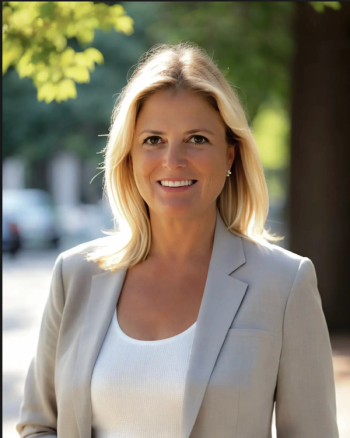
- Pharmaceutical Executive-07-03-2007
- Volume 0
- Issue 0
The Secret of My Success
Between the constant push for more government regulation of drug marketing and the conservative nature of the industry, the fast-paced world of pharmaceutical advertising doesn't seem too glamorous. But for one night every year, dozens of agencies and pharma companies take a walk down the red carpet to honor their peers at the annual PhAME Awards. Pharm Exec talked to some of the winners and industry insiders to take the current pulse of consumer advertising and find out what it takes to make an award-winning DTC ad.
Between the constant push for more government regulation of drug marketing and the conservative nature of the industry, the fast-paced world of pharmaceutical advertising doesn't seem too glamorous. But for one night every year, dozens of agencies and pharma companies take a walk down the red carpet to honor their peers at the annual PhAME Awards. Pharm Exec talked to some of the winners and industry insiders to take the current pulse of consumer advertising and find out what it takes to make an award-winning DTC ad.
Q: What does it take to make an award-winning DTC ad?
A: Israel Rodriguez, chairman and cofounder of the PhAME Awards
All outstanding marketing efforts have three things in common: a well-defined strategy, focused targeting of consumers' needs and wants, and creative and support elements to make them compelling. What distinguishes pharmaceutical marketing most is its discipline regarding strategy. Pharmaceutical marketers tend to be far more rigorous and specific with their marketing objectives, like building awareness, increasing disease-state education, or encouraging compliance. The most effective communication strategies are specific in their objective and focused on just one or two communication priorities to achieve that objective. Pharmaceutical marketers are better than most at staying focused on a core communication priority. These communication-strategy principles are common to all good marketing, and pharmaceutical marketers have become particularly adept.
Q: What was your favorite DTC campaign this past year, and why did it move you?
A: Julie Holcombe, senior marketing manager, Wyeth Pharmaceuticals
Merck and Schering's print and TV campaign for Vytorin [in which the sources of cholesterol are discussed] was, creatively, one of the most clever I've seen in a while. With a category that is largely asymptomatic, getting people to pay attention can be tricky. However, Vytorin's use of copy that gets right to the point, combined with visuals that are engaging, humorous, and relatable, really comes off well. The result is that they've been able to take a potentially difficult-to-understand mechanism of action and translate it into a very simple, straightforward, and clean message that is recognizable and fun. Also, I loved that this execution gave them the flexibility for a campaign series—a string of food/family combinations that allowed them to reach deep into their patient population while keeping audiences wanting even more. Kudos to the product-management and agency teams!
Q Why do we see so few innovative DTC campaigns in pharma advertising?
A: Fabio Gratton, cofounder and chief innovation officer, Ignite Health
It's much easier to look at compounds and drug classes that have already worked and bring similar drugs to market. The same is true for marketing. No one will ever lose their job for doing what everyone else has done before and failing; but they can almost guarantee their demise should they try something new and fail. In our industry, the risk-takers tend to be the smaller biotech companies or start-up agencies that are looking to make a big impact in a crowded marketplace. Those companies may not have the budgets to fight the Goliaths of their industry, so they use innovation as a strategy to break through, differentiate, and ultimately create a competitive advantage. However, I believe that organizations that do not foster a culture of innovation run the risk of becoming extinct in the long run. You can think of it as business Darwinism.
Q: Why is emotion so important in pharma advertising?
A: Bev Lybrand, vice president and general manager for Gardasil at Merck
Emotion allows the audience to relate to your product in a way that clinical data does not. In the case of Gardasil, we're talking about helping to prevent cervical cancer. The science and the data are compelling, but they are only part of the story. Only by focusing on the human element are we able to convey that this is a product that has the potential to protect our daughters, our loved ones, and our friends. The emotion also allows us to educate the consumer and encourage a dialogue between the consumer and the healthcare professional.
A: Mike Rutstein, executive vice president, director of consumer healthcare, Draftfcb New York
When it comes to effective advertising, nothing drives action faster than making consumers smile, laugh, and even cry. When you appeal to the consumers' emotions, the likelihood that consumers will bond and engage with a brand increases significantly. These bonds drive business because consumers see the brands they've made emotional connections with as the ones that understand them—their feelings, their wants, their needs. The best DTC marketers understand the importance of identifying with a consumer's emotion. They recognize that their target audience is often facing life-altering, and potentially life-limiting, healthcare conditions. As a result, these marketers often step outside their typical brand-centric messaging to speak through the lens of the consumer and their experience to ultimately drive action. It's only through understanding, empathy, and compassion that we can truly connect and turn awareness into action.
Q: How do you see DTC advertising changing in the next year?
A: Nancy Turett, global president, health chair, Canada and Latin America, Edelman
The ad will become part of an overall, integrated program that begins with the development process itself. Companies will move from market research to cocreation with the market: Focus-group participants will sit at the table with the advertising, public relations, promotions, medical, and direct-mail agencies—the folks who used to listen and observe from behind a two-way mirror. More and more of the research will take place with online communities of interest as well. The dialogue will be lively and transparent. So we'll see a diverse group of stakeholders at the table together, openly conversing and cocreating ads that educate and spark online and offline discussions. These ads will be just one vehicle among a larger, integrated set of initiatives, some community-based, that build relationships, coach people about health, educate about conditions and diseases, and, in that context, educate about treatments.
A: Anne Meyers, manager, consumer marketing, Eli Lilly & Co., and a PhAME executive committee member
Looking at the PhAME Awards entries over the past nine years, I can see they have really evolved. Early on, the focus was mass advertising, and the messages were more rationally and clinically based. Gradually there was some shift into newer media and the campaigns were really pushing out on creativity. Today, there is a vast spectrum of health marketing campaigns, from TV and print to cutting-edge interactive and relationship-marketing initiatives to multicultural campaigns and programs oriented to public health. These campaigns use a nice balance of insight-based creativity to deliver important health information and really demonstrate what it takes today to create "a better informed and healthier world."
Articles in this issue
over 18 years ago
Oh Man, Avandiaover 18 years ago
Post-regulatoryover 18 years ago
Good Tailoringover 18 years ago
In Sync with Californiaover 18 years ago
Lead, Follow, or Get Out of the Wayover 18 years ago
Five-Year Survivor: European Editionover 18 years ago
Professional Promotion Through Patient Understandingover 18 years ago
Take Me to Your Leaderover 18 years ago
Game OnNewsletter
Lead with insight with the Pharmaceutical Executive newsletter, featuring strategic analysis, leadership trends, and market intelligence for biopharma decision-makers.




